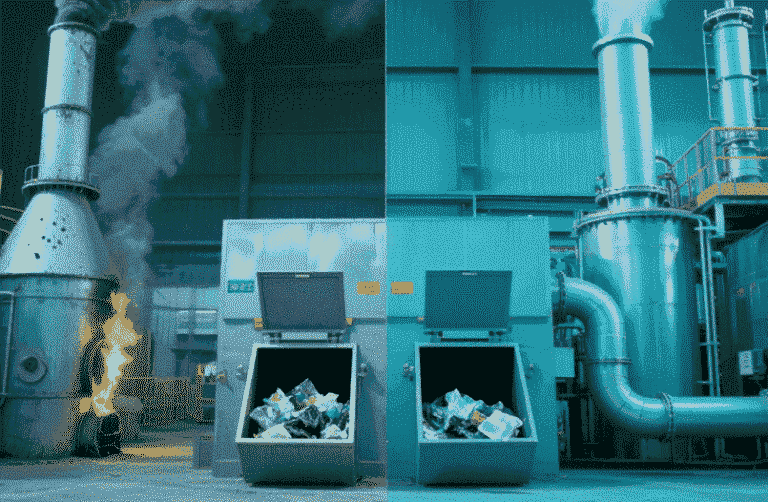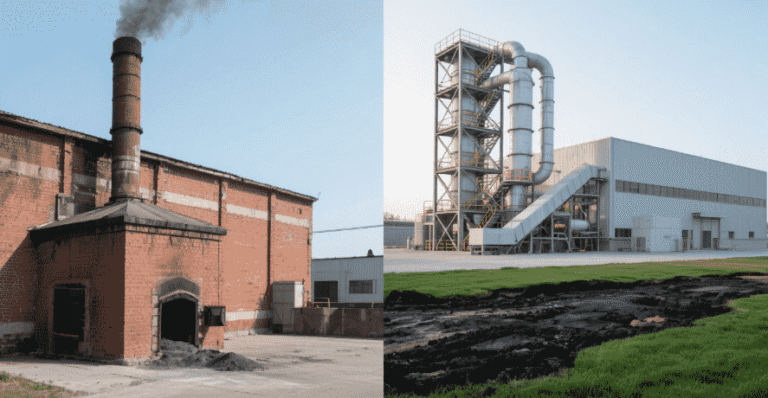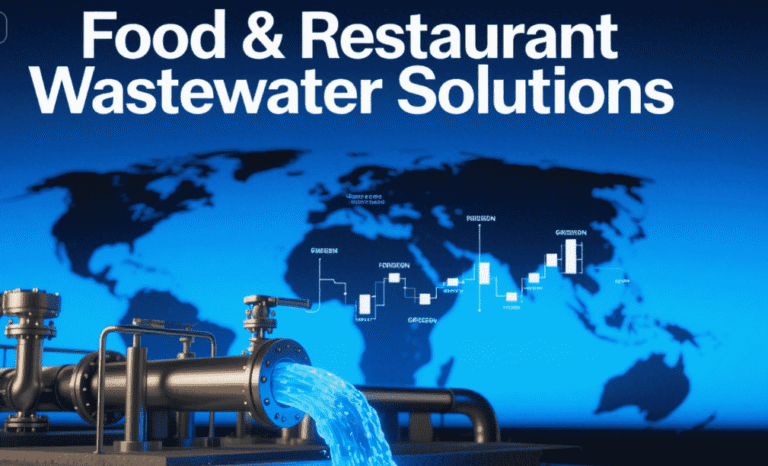Welcome to My Blog! 🌟
I’m so glad you’re here! Before we jump into the exciting content, I’d love for you to connect with me on my social media platforms. It’s where I share extra insights, interact with our amazing community, and post regular updates. Here’s how you can join the conversation:
📘 Facebook: Follow me on Facebook for more updates
Now, let’s dive into the journey ahead. I hope you find everything here both engaging and valuable. Together, let’s explore, learn, and grow! 🚀
Table of Contents
Introduction
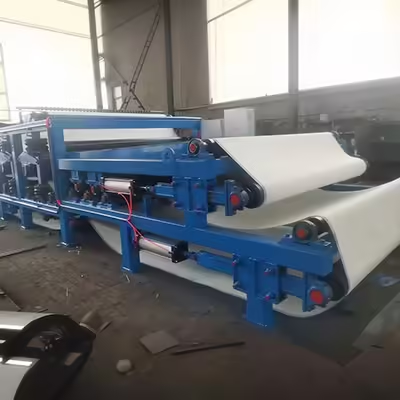
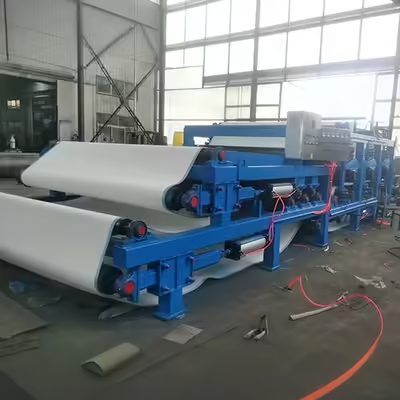
Sludge dewatering equipment plays a crucial role in a wide range of industrial and municipal wastewater treatment systems. It enables the separation of liquids from solids, creating a more manageable and environmentally friendly output. However, despite its importance, many systems fail to perform effectively due to preventable issues. This article explores the top 7 reasons sludge dewatering equipment fails and how you can avoid them.
As a leading manufacturer and innovator in the field, Shandong Lushun Environmental Technology Co., Ltd. integrates technology innovation, equipment production, product supply, and technical services. With a philosophy of quality, innovation, and customer-centric service, Lushun provides high-quality environmental protection solutions, including advanced sludge dewatering equipment.
NO 1. Improper Sizing of Sludge Dewatering Equipment
One of the most frequent causes of failure in sludge dewatering equipment is the use of equipment that is either too small or too large for the sludge treatment application. Equipment sizing directly affects throughput, energy efficiency, and the final quality of the sludge cake. An undersized dewatering system may be overwhelmed by the volume of incoming sludge, leading to bottlenecks, frequent downtime, and accelerated mechanical wear. This ultimately compromises overall system efficiency.
Conversely, an oversized machine may never reach its optimal operating condition, often leading to poor solid-liquid separation due to underloading. For example, operating a high-capacity belt filter press at a fraction of its design volume may result in wet sludge cakes and increased energy consumption. It’s also harder to maintain consistent pressure and flow rates in such scenarios.
To avoid such issues, proper equipment sizing must be based on a comprehensive analysis of sludge generation rates, solid content, and operational hours. Custom sizing not only enhances operational reliability but also maximizes return on investment by reducing chemical usage and energy waste.
NO 2. Poor Sludge Conditioning Before Dewatering
Sludge conditioning is a vital step in the dewatering process and often a hidden reason behind poor performance or equipment failure. Conditioning involves treating the sludge with chemical agents such as flocculants or coagulants to promote the aggregation of fine particles into larger, more easily separable flocs.
Failure to properly condition the sludge results in poor filtration, excessive water retention in the cake, and rapid fouling of the filter media. Poorly conditioned sludge is also more abrasive and sticky, which can cause premature wear of belts and rollers. Additionally, inconsistent dosing of flocculants can lead to clogging in the feed system or reduced throughput.
Operators must ensure that the type and dosage of conditioning agents are suited for the specific sludge composition. Periodic jar testing and polymer trials can help identify the optimal treatment parameters. This simple preventive step significantly improves the efficiency of sludge dewatering equipment and extends its operational life.
NO 3. Inconsistent Sludge Feed Composition
Variability in sludge feed composition is another critical factor that leads to dewatering inefficiencies or outright equipment failure. Sludge from different sources, such as municipal, industrial, or mining applications, varies in solids concentration, particle size, and organic content. A sudden change in sludge characteristics without recalibrating the equipment can destabilize the dewatering process.
For example, switching from mine sludge, which typically contains fine mineral particles, to industrial sludge with high oil content, requires adjustment in belt speed, pressure, and chemical conditioning. If operators fail to adapt the settings accordingly, it can lead to belt clogging, water bypass, or incomplete separation.
To maintain consistent dewatering performance, real-time monitoring of sludge feed parameters and flexible operating protocols should be implemented. Modern systems often incorporate automatic sensors and controllers that adjust parameters based on sludge consistency. However, in the absence of automation, training personnel to recognize changes and react accordingly is essential for preventing process disruptions.
NO 4. Inadequate Maintenance and Inspection Routines

Regular maintenance is the backbone of reliable sludge dewatering equipment operation. Unfortunately, it is one of the most overlooked aspects, especially in facilities that are running 24/7 under tight staffing or budget constraints. Routine inspections can reveal early signs of mechanical fatigue, wear and tear, or blockages that might otherwise lead to catastrophic failure if left unaddressed.
Worn-out belts may cause water leakage or uneven pressure during dewatering, while cracked seals or corroded rollers can compromise the integrity of the entire system. Ignoring these issues leads to reduced dewatering performance, lower cake dryness, and even equipment shutdown.
Maintenance should include daily checks for belt tension and alignment, weekly cleaning of spray nozzles, and monthly inspection of rollers and pump systems. Having a documented maintenance schedule and assigning accountability to trained technicians are cost-effective ways to avoid expensive repairs and downtime.
NO 5. Incorrect Operating Parameters
Even the most advanced sludge dewatering equipment can underperform or break down if not operated under the correct settings. Key operating parameters include belt speed, feed rate, and pressure profiles. These variables must be optimized based on the specific sludge characteristics to achieve maximum separation efficiency and machine durability.
For example, running the belt at high speed with a low feed rate might result in poor floc formation and increased water retention in the sludge cake. Conversely, overloading the feed pump without increasing belt pressure could flood the filter area and cause spillage or clogging.
Operators should understand the relationship between feed properties and machine settings, ideally using historical performance data to guide parameter adjustments. Some equipment models offer automated controls to maintain ideal settings, but manual calibration is still crucial in many installations. Precision in operation not only enhances performance but also extends equipment lifespan and reduces energy and chemical costs.
NO 6. Using the Wrong Type of Sludge Dewatering Equipment
Not all sludge is the same, and neither is the equipment designed to handle it. Choosing an inappropriate type of sludge dewatering equipment for a given sludge category is a common mistake, especially when trying to cut costs or repurpose existing machinery. Each type of sludge—whether biological, mining, or industrial—has specific requirements in terms of pressure, filtration area, and mechanical robustness.
Using a standard belt filter press for oily industrial sludge, for instance, may lead to slippage and poor cake formation. Similarly, applying a screw press to high-viscosity mining sludge might result in clogging and reduced throughput.
Selecting the right equipment begins with a full analysis of sludge characteristics, including solid content, particle size distribution, and chemical properties. Consulting with manufacturers who offer tailored solutions based on sludge type—such as those provided by Shandong Lushun Environmental Technology Co., Ltd.—can ensure that the most suitable and efficient technology is deployed for each application.
NO 7. Delayed Replacement of Worn-Out Parts
One of the most detrimental yet preventable issues affecting sludge dewatering equipment is the delayed replacement of worn or damaged parts. Operators may postpone maintenance due to budget constraints or production pressure, not realizing that failing components can severely impact performance and cause secondary damage to other system parts.
For instance, worn filter belts allow sludge to bypass the filtering process, reducing cake dryness and leading to higher downstream treatment costs. Damaged rollers can exert uneven pressure, causing belt misalignment or rupture. Leaky seals may allow sludge to contaminate other mechanical parts, leading to corrosion or motor failure.
Timely replacement of parts such as belts, rollers, seals, and bearings is essential to maintaining consistent system performance. Facilities should keep an inventory of critical spare parts and implement a proactive replacement policy. Preventive replacement may incur a cost upfront but prevents far greater losses from extended downtime or emergency repairs.
Key Performance Comparison Table
Below is a comparative table of two primary types of sludge handled by Shandong Lushun’s sludge dewatering equipment:
| Sludge Type | Equipment Used | Dewatering Process Description | Machine Dimensions | Weight (kg) |
|---|---|---|---|---|
| Mine Sludge | Belt Filter Press | Gravity filtration + multi-stage pressure rollers for cake formation | 13000x3500x2600 mm | 9600 |
| Industrial Sludge | Belt Filter Press | Gravity filtration + pressure zone for deeper dehydration with low moisture final cake | 13000x3000x2600 mm | 8200 |
These solutions reflect Lushun’s commitment to innovative, tailored sludge dewatering systems.
How Shandong Lushun Ensures Sludge Dewatering Equipment Performance

Shandong Lushun Environmental Technology Co., Ltd. combines foreign advanced technology with local innovations. Our products go through strict quality control and engineering refinement, ensuring our sludge dewatering equipment performs consistently across applications. We also provide lifetime support, spare parts, and full after-sales service.
Common Signs Your Sludge Dewatering Equipment is Failing
- Increased water content in sludge cake
- Persistent clogs and overflows
- Abnormal noises or vibrations during operation
- Increased energy consumption
- Frequent manual intervention required
Early identification of these issues can prevent costly repairs and extended downtime.
Conclusion
Understanding the main causes of sludge dewatering equipment failure allows operators to take proactive steps. From equipment selection to daily operation and long-term maintenance, each element plays a part in ensuring efficient and uninterrupted performance.
By choosing advanced solutions from Shandong Lushun Environmental Technology Co., Ltd., users not only benefit from high-quality products but also from reliable service and sustainable operations. Our commitment to green development helps build a cleaner, healthier world.
FAQ
What is sludge dewatering equipment?
Sludge dewatering equipment is used to remove water from wastewater sludge, reducing its volume and making disposal more efficient.
How often should sludge dewatering systems be maintained?
Basic maintenance should be conducted weekly, with in-depth checks monthly. Frequency depends on usage volume and sludge type.
What types of sludge can Shandong Lushun equipment handle?
Our equipment is designed to handle a wide range of sludge types including mine sludge, industrial sludge, and municipal sludge.
How can I improve the efficiency of my sludge dewatering equipment?
Ensure proper sizing, regular maintenance, correct operating parameters, and sludge pre-treatment.
Why choose Shandong Lushun Environmental Technology Co., Ltd.?
We offer high-quality, innovative sludge dewatering equipment backed by comprehensive service, helping clients meet environmental and operational goals.



